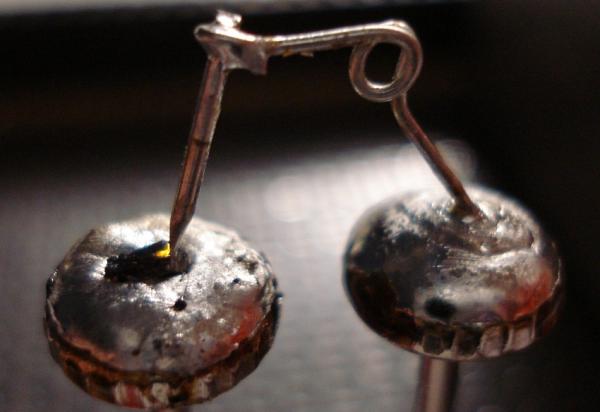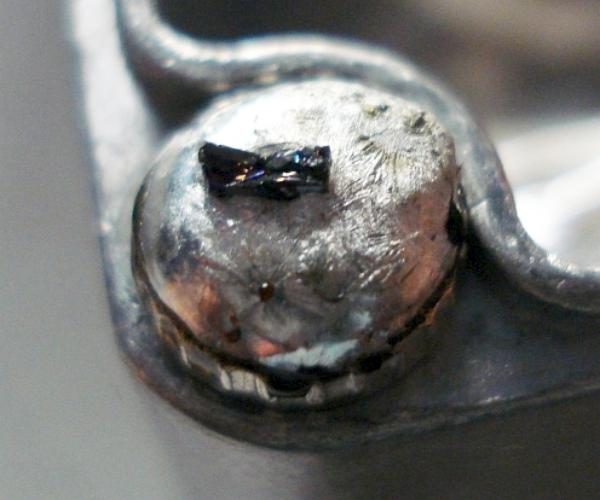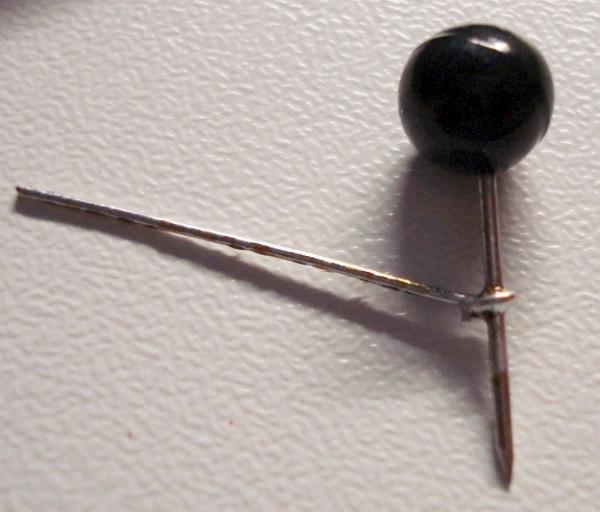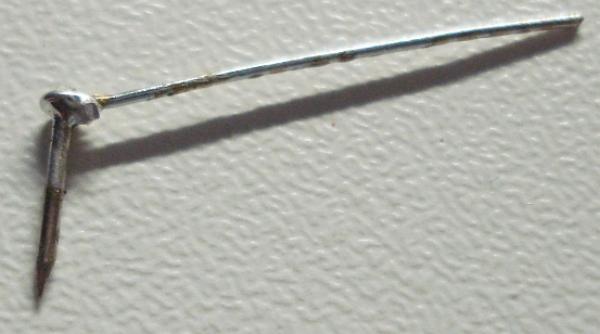Homemade silicon carbide LED
This article describes the process of creating a working self-made LED. For a long time I thought that the creation of active electronic components from the very beginning from scratch is an impracticable idea. How wrong I was. Galenic (from lead sulfide PbS. - Approx. Transl. ) Diode detector belongs to the era of the birth of radio. The LED appeared around the same time. This is my first (actually the second, after galena) attempt to create a semiconductor.

All you need is a few of the details that are in each house, as well as a few pieces of silicon carbide (SiC). Silicon Carbide can be bought cheaply on ebay. A small piece is enough for a dozen LEDs.
First of all, you need to choose the right SiC crystal for your LEDs. Take silicon carbide and gently break it into pieces so small that you can only take them with tweezers. Find a metal surface and put on it a few such pieces. Connect the metal to the positive pole of a 10–15 V DC source. Connect a needle to the negative pole of the source. Hold a piece of silicon carbide with tweezers and make sure that it has good contact with the metal. Then touch the crystal with a needle and find a place that glows quite well.
')

After you find a suitable crystal, you need to fix it somewhere motionless. For this purpose, I took a nail with a wide head. It also serves as a good heat sink.

Put a solder nail on the cap and melt it with a soldering iron. While the solder is liquid, place a SiC crystal into it with tweezers, making sure that the side of the crystal that will emit light is on top. You can slightly drown the crystal so that the solder clasps it on all sides. After you remove the soldering iron, and the solder hardens, the crystal will be securely fixed. If it did not work out, you can repeat the process again and again, silicon carbide does not react with solder.

Now you need to make a point contact. Take a pin and wind a wire around it. I took a leg from a 0.25 watt resistor. Solder the wire to the pin and bite off the excess, as shown in the figure.


Make a loop on the wire so that it springs, and solder its end to the second nail attached to the first nail that holds the crystal. The whole structure should be located as shown in the figure below:

I have two nails just soldered to the breadboard, but I recommend to strengthen the structure with a couple more pieces of metal.

And finally, you need to carefully bend the spring so that the tip rests on the area of the crystal that emits light.

The best operating point for this LED is around 9 volts. In this case, the LED consumes about 25 mA. With such parameters, the glow is bright enough, and the LED does not overheat. To make sure that it turned out the diode, I inverted the polarity of the power supply, and, of course, did not get any luminescence.
To show that the process can be repeated many times with the same result, I made a second LED. The result was exactly the same. I collected the second LED in just 10 minutes.


Making LEDs in this way is really simple and cheap. However, if you offer a more reliable and easier way, I would be happy to try it.

All you need is a few of the details that are in each house, as well as a few pieces of silicon carbide (SiC). Silicon Carbide can be bought cheaply on ebay. A small piece is enough for a dozen LEDs.
First of all, you need to choose the right SiC crystal for your LEDs. Take silicon carbide and gently break it into pieces so small that you can only take them with tweezers. Find a metal surface and put on it a few such pieces. Connect the metal to the positive pole of a 10–15 V DC source. Connect a needle to the negative pole of the source. Hold a piece of silicon carbide with tweezers and make sure that it has good contact with the metal. Then touch the crystal with a needle and find a place that glows quite well.
')

After you find a suitable crystal, you need to fix it somewhere motionless. For this purpose, I took a nail with a wide head. It also serves as a good heat sink.

Put a solder nail on the cap and melt it with a soldering iron. While the solder is liquid, place a SiC crystal into it with tweezers, making sure that the side of the crystal that will emit light is on top. You can slightly drown the crystal so that the solder clasps it on all sides. After you remove the soldering iron, and the solder hardens, the crystal will be securely fixed. If it did not work out, you can repeat the process again and again, silicon carbide does not react with solder.

Now you need to make a point contact. Take a pin and wind a wire around it. I took a leg from a 0.25 watt resistor. Solder the wire to the pin and bite off the excess, as shown in the figure.


Make a loop on the wire so that it springs, and solder its end to the second nail attached to the first nail that holds the crystal. The whole structure should be located as shown in the figure below:

I have two nails just soldered to the breadboard, but I recommend to strengthen the structure with a couple more pieces of metal.

And finally, you need to carefully bend the spring so that the tip rests on the area of the crystal that emits light.

The best operating point for this LED is around 9 volts. In this case, the LED consumes about 25 mA. With such parameters, the glow is bright enough, and the LED does not overheat. To make sure that it turned out the diode, I inverted the polarity of the power supply, and, of course, did not get any luminescence.
To show that the process can be repeated many times with the same result, I made a second LED. The result was exactly the same. I collected the second LED in just 10 minutes.


Making LEDs in this way is really simple and cheap. However, if you offer a more reliable and easier way, I would be happy to try it.
Source: https://habr.com/ru/post/145327/
All Articles